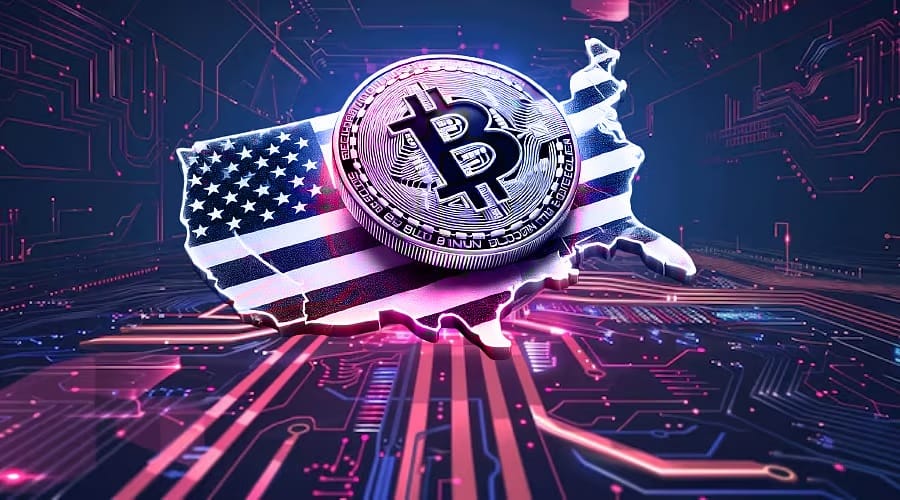US Treasury Secretary Scott Bessent Details Future Strategic Bitcoin Reserve Plans

U.S. Treasury Secretary Scott Bessent appeared on Fox Business Thursday morning to discuss the administration's approach to Bitcoin and gold reserves. In the interview with host Maria Bartiromo, Bessent emphasized that the government has no intention of purchasing additional Bitcoin for the national strategic reserve proposed by President Trump. He highlighted the current holdings, valued between $15 billion and $20 billion at today's prices, as a foundation for moving into modern financial practices. Bessent described this reserve as a step toward bringing the United States into the 21st century while relying on existing seized assets.
The secretary made clear that future growth in the Bitcoin holdings would come solely from confiscated Bitcoin and other cryptocurrencies obtained through legal actions. He stated the administration would halt any sales of Bitcoin and digital assets currently in possession, allowing the reserve to build organically over time. This policy aligns with efforts to maintain fiscal responsibility without committing new funds to purchases. Bessent's comments came in response to questions about expanding the reserve, underscoring a cautious yet committed stance on digital assets.
When asked about the nation's gold reserves, Bessent expressed doubt over any revaluation of the 261.5 million ounces held by the government. Officially priced at $42.22 per ounce since 1973, these holdings are worth around $11 billion on paper but carry a market value nearing $750 billion. He affirmed that gold would remain a key store of value without changes to its accounting. This approach reflects a broader strategy of preserving assets rather than actively trading or adjusting their reported worth.
The crypto market reacted swiftly to Bessent's statements, with Bitcoin prices dipping below $119,000 shortly after the interview aired. Bitcoin had reached an all time high of $124K earlier Wednesday, but the clarification on no new buys contributed to the decline. Traders and investors appear to be digesting the news, weighing the long-term benefits of holding against the absence of government-driven demand. Despite the drop, some analysts view the policy as stabilizing for the asset class.
U.S. Secretary Scott Bessent detailed the future plans for the Strategic Bitcoin Reserve on Fox News this morning 👇 pic.twitter.com/gmNTBnmhdg
— Bitcoin & Crypto Alerts 🚨 (@bitcoinxalerts) August 14, 2025
Evolution of the Strategic Bitcoin Reserve
President Trump's executive order in March 2025 laid the groundwork for the Strategic Bitcoin Reserve, directing the Treasury to use forfeited digital assets as its primary source. The order prohibited sales of existing holdings and emphasized a budget-neutral expansion to avoid taxpayer costs. This framework aimed to position the United States as a leader in cryptocurrency without direct market intervention. Bessent's recent remarks reinforce this original directive, clarifying that the reserve will not involve active buying on open exchanges.
Scott Bessent, appointed as the 79th Treasury Secretary on January 28, 2025, brings a background in hedge fund management to his role. His experience includes navigating financial markets, which informs the administration's approach to digital currencies. Bessent has consistently advocated for policies that foster economic growth while managing risks associated with volatile assets. In the interview, he tied the Bitcoin strategy to broader goals of innovation and security in the financial system.
Crypto enthusiasts on social media expressed mixed feelings about the announcement, with some praising the halt on sales as a positive signal for Bitcoin's value. Others voiced disappointment over the lack of new purchases, arguing it falls short of bolder promises made during the campaign. Discussions highlighted concerns about reliance on confiscations, questioning how quickly the reserve might grow through such means. Overall, many see this as a pragmatic step, though it tempers expectations for aggressive government involvement.
The policy extends to other digital assets, as the executive order also established a separate United States Digital Asset Stockpile for broader cryptocurrencies. Which other cryptocurrencies will make up the digital assets stockpile is still unclear at this time. Back in March, Trump made an announcement that the stockpile reserve would include cryptos such as Solana, Cardano, and XRP. However, the later official executive order which mentions the digital assets stockpile is more general, and just says the stockpile will be made up of digital assets owned by the US Treasury.
This initiative seeks to diversify holdings while adhering to the same principles of using seized property. Bessent did not delve into specifics on other coins during the segment, focusing primarily on Bitcoin and gold. As the administration continues to implement these measures, analysts anticipate further details on oversight and transparency.
Economic experts note that maintaining the reserve through forfeitures could provide a steady, albeit unpredictable, influx of assets. This method avoids injecting new capital into the market, potentially preventing inflationary pressures on crypto prices. It also aligns with law enforcement efforts to combat illicit activities involving digital currencies. The strategy positions the government as a holder rather than a trader, emphasizing long-term stability over short-term gains.
Bessent's interview touched on related topics like tariffs and housing challenges, but the Bitcoin discussion drew significant attention given the asset's recent volatility. He reiterated the administration's commitment to using technology to strengthen the economy without unnecessary risks. As Bitcoin recovers from the initial dip, the market seems to be adjusting to this clarified vision. The reserve's development will likely remain a focal point for both policymakers and investors in the coming months.

